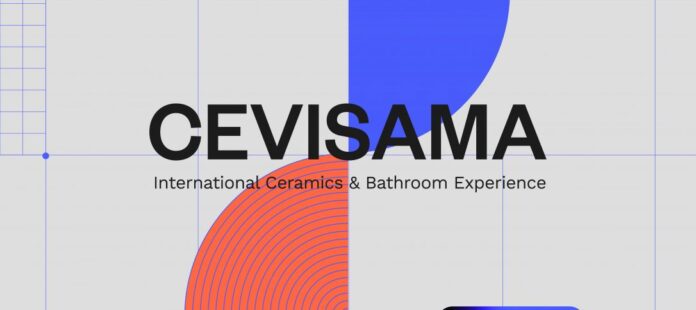Europe’s largest trade show for ceramics and bath fittings Cevisama will return in 2023; the event will now take place from February 27 to March 3 in Valencia, Spain.
Cevisama is considered the bellwether of Spain’s, and perhaps EU’s, ceramics industry. It was scheduled for 13 – 17 June 2022, having earlier been postponed from its traditional Feb-March schedule owing to Covid-19 induced lockdowns. However, the economic crisis precipitated by the ongoing Ukraine-Russia war has compelled its management to move up the event further to 2023, and actually back to the traditional dates cycle. The biennial event was last held in 2020.
The organisers inform that during this hiatus they have added several aspects to the show, which will enhance its vibrancy, relevance and RoI to participants and visitors.
A new section titled Cevisama Tech has been added to the event, to bring to the fore the Spanish industry’s leadership in research, development, and innovation (R+D+i). This section, comprising two exhibition halls, shall present the state-of-the-art in machinery, frits, glazes and colours, besides innovations in software, logistics, BIM and applied technology. The displays will be supported by an extensive program of seminars and debates by leading industry experts, focused on innovation, sustainability, and technology.
ALSO READ: Quest for Net Zero: The Roca Way
The other new aspect of the show, probably more significant, will be its foray into the construction solutions space, in the form of a separate section called Cevisama Build. This move is in response to the growing need for sustainable construction. Cevisama Build will be dedicated to materials and techniques that make construction energy efficient, sustainable and design-driven. Exhibits will include MEP installations, BIM, construction systems, sustainable construction materials, home automation, diamond tools, thermal and acoustic insulation, ventilation and facades.
The third new is Cevisama’s brand identity itself. According to the organisers the new identity, in which shapes, colours and geometry are the protagonists, conveys the idea that the event is dynamic and in tune with the times. The logo features a grey background, geometric lines, and bold shapes in deep colours. This new visual concept has been created by the agency VXLAB.
“This new image is not just a change, it is a natural step forward,” says Carmen Álvarez, the fair’s director, adding that more initiatives have been lined up. “Cevisama will return in 2023. Professionals are going to encounter a Cevisama that is strong, resilient and ready to offer the best: the best products and the best clients. It will be a unique event.”
Cevisama aims to use the synergies between the construction industry and the tile and bathroom sector to address a new profile of visitors who are focussed on construction, such as property developers and builders, besides serving loyalists devoted to design and innovation, including architects, designers and trade buyers.
The European, and particularly Spanish, ceramics sector is going through turbulent times. The industry, which was limping back after the debilitating impact of Covid-19 on business sentiment, has been struck again, this time harder. The Ukraine-Russia war has resulted in the stoppage of supplies of Ukrainian ball clay, the chunk of which originates from Donbas in eastern Ukraine where the war is at its fiercest.
ALSO READ: Kitchen is a Strategic Space for Crompton
To put in context, Ukraine supplies over four million tonnes of white ball clay each year and feeds 80 per cent of the demand of tile manufacturers in 18 countries. The Donbas clay is considered most suited for porcelain tile production due to its qualities of high plasticity, high whiteness, and low water absorption.
The Spanish tile industry accounts for nearly 26 per cent of this supply, while other key recipients are Italy, Poland and Turkey. A recent article by Imformed reveals how precariously low clay inventories are, down to a few weeks, at these production hubs.
According to the Spanish Ceramic Tile Manufacturers’ Association (ASCER), Spain produced 567 million sqm of tiles in 2021, which was an increase of 20.3 per cent over the previous year, making it the top EU producer. But this year Spain has lost the Russian market, its 12th largest export. Russia imported ceramics worth US$ 932 million from various countries in 2020.
In recent years the Spanish industry has transitioned from red-bodied to white-bodied tiles, and 70 per cent of its white clay requirement is met by Ukraine. But manufacturers are exploring new clay mixes and other strategies for reducing their dependence on Ukraine. Spain’s ceramic tile cluster is based in Castellón, accounting for 94 per cent of the country’s tile production.
The reinvigorated Cevisama will return in 2023, to send out a message that the Spanish ceramics and bath fittings industry has reset itself, and is primed to do business with the rest of the world. In its last edition, held in 2020, Cevisama had brought together over 800 firms and brands. It had received 90,000 visitors, of which more than 21,000 were from outside Spain.


